For the fourth instalment in our series of reviews of publications by the Asia specialist, Tuttle Publishing, we have selected some titles, with a distinctively Japanese bent this time.
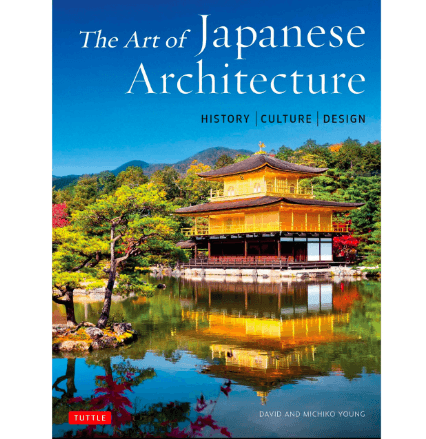
The Art of Japanese Architecture: History/Culture/Design
By Doug and Michiko Young
From pre-Jomon pit dwellings to the vast underground commercial complexes under present-day Osaka, this illustrated survey tells the history of Japan through its buildings. It is a story of how repeated infusions of foreign influence, from China and Korea in the 6th and 7th centuries to Le Corbusier in the 20th, are subjected to a “maturation process” in which they are adapted to local conditions as well as tastes, including a preference for the organic and the asymmetrical, natural materials, especially wood, and rustic simplicity sometimes bordering on shabbiness. Shinto shrines, Buddhist temples, farmhouses, kura storehouses, Heian- and Muromachi-period palaces (shinden and shoin, respectively), castles, teahouses, sukiya (villas), theaters, sumo rings, pseudo-western buildings, “modern-traditional buildings” (motora), machiya, ryokan, modernist stadiums, and Bubble-era skyscrapers are all discussed within these pages. Because of Japan’s humid climate and the ever-present threat of earthquakes and fire, the authors argue that elevated, thick-walled kura play an important role. They are believed to be the basis for such diverse masterpieces of Japanese architecture as the Great Shrine at Ise and Katsura Imperial Villa, as well as warehouses and breweries.
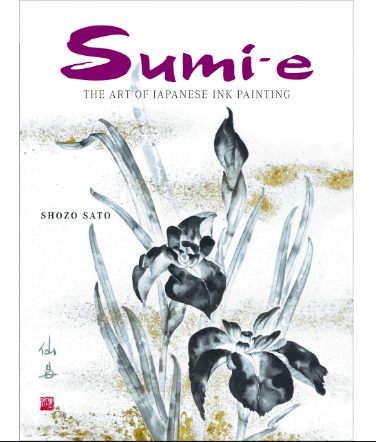
Sumi-e: The Art of Japanese Ink Painting:
By Shozo Sato
Black and white is not simply black and white. Shozo Sato presents Sumi-e: The Art of Japanese Ink Painting as a technically inclined instruction manual on how to paint using black ink, but you can also learn a great deal from his philosophical musings. Despite his main focus on sumi-e, his writing weaves through beautiful color photographs and diagrams, prompting wonder by examining the fundamental reasons why we make art. The instruction itself is not overly direct, nor does Sato take himself too seriously. It is the grey area between technical details and abstract thoughts that make this book special—just as subtle greys give depth to a black and white sumi-e painting. This volume is a suitable companion to Sato’s other book Shodo: The Quiet Art of Japanese Zen Calligraphy.
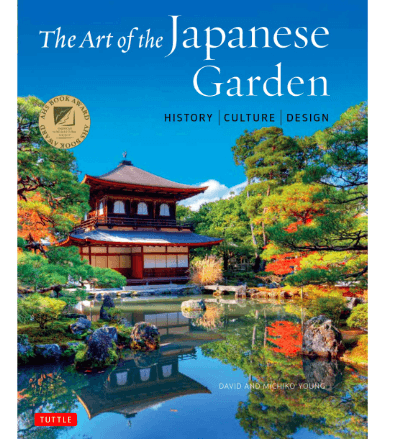
The Art of Japanese Garden: History/Culture/Design
By Doug and Michiko Young
The enigmatic art of the Japanese garden does not give up its secrets easily. It plays with what is hidden, revealed, implied and imagined. As visitors we are encouraged to search actively for content and meaning, which despite our best efforts, can remain opaque. Tools are required for putting this three-dimensional art form into a socio-historical context. Doug and Michiko Young’s reissued volume is ambitious in scope and features great attention to detail. With concise prose written firmly from a broad anthropological perspective, this updated edition easily distinguishes itself from the plethora of glossy coffee table tomes available. Impressively researched with high quality images, maps, illustrations and detailed layouts of Japan’s notable gardens, the authors have a clear commitment to deeply contextualize the culture, history and design of Japanese gardens. The Art of the Japanese Garden is an invaluable reference for an engaged audience eager to digest this paradoxically calming, yet challenging landscape tradition.
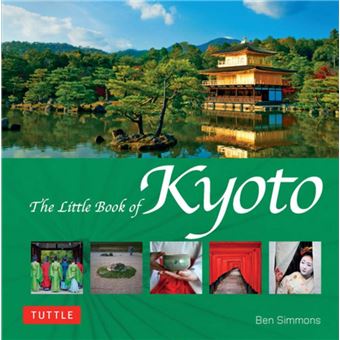
By Ben Simmons
The winding streets of Kyoto’s capital city promise endless discovery, although sometimes it can be difficult to know where to start the adventure. Having spent over twenty years exploring everything Kyoto has to offer, author and photographer Ben Simmons has a better idea than most. In this compact volume, Simmons introduces readers to the most notable sites and experiences in Japan’s ancient capital. Through vivid photography and easily digestible captions, he provides readers with a more human and personal window into Kyoto life. Temples, festivals, and daily life are all explored with loving familiarity, and beautifully illustrated with Simmons’ impeccably printed photographs. Each of the four chapters of this volume focus on a different aspect of Kyoto culture, from culture and customs, to the city’s Zen heritage. This book is a perfect handbag-sized companion for any traveler to Kyoto, be they first-time visitors or seasoned explorers looking for something more.
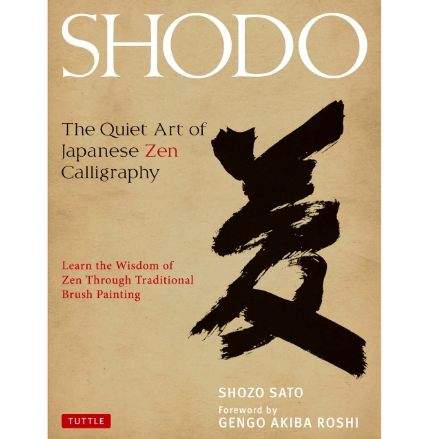
Shodo, The Quiet Art of Japanese Zen Calligraphy
By Shozo Sato, Foreword by Gengo Akiba Roshi
Both Zen Buddhism and the art of calligraphy can seem impenetrable to newcomers. Even the nuances of how to hold a brush can form an insurmountable obstacle without proper training. However, Shozo Sato’s Shodo, The Quiet Art of Japanese Zen Calligraphy synthesizes these challenging fields into an easily digestible and visually stunning volume. Sato uses his extensive experience in the Zen arts to introduce Zengo – the notoriously confusing single line Buddhist sayings often illustrated with calligraphic scripts – in an easily understandable manner. He presents the meaning and history of each Zengo, or koan, alongside notable examples by Zen calligraphers. In addition to these sayings, Sato also gives an introduction to the tools and basic knowledge of Japanese Zen calligraphy and step by step instructions from multiple style traditions for those who wish to practice at home. Shodo is a perfect coffee table book for those wanting to learn more about calligraphy, and dip their brushes into the world Zen.
…and a great gift for Japanophiles
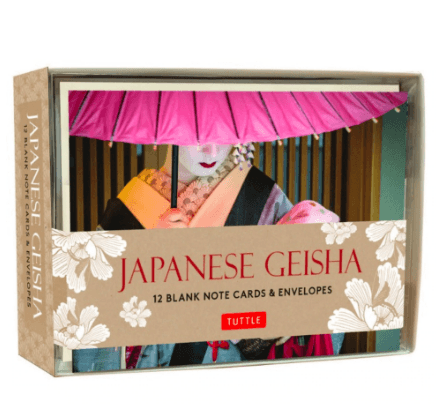
By Patrick Hochner
Receiving one of these cards would make anyone yearn for the old capital. Geiko and maiko are Kyoto’s most immediately recognizable icons, and because of their stylish elegance, traditional make-up and colorful kimono—and their exceptional grace—have attracted photographers from around the world, including National Geographic’s Jodie Cobb. Local geiko photographers include Peter MacIntosh and Robert van Koesveld (KJ89:Craft Ecologies & KJ92: Devotion). This set of 12 distinctive notecards is a selection of images made by the passionate French lensman Patrick Hochner, who has settled in the Gion district and photographs the geiko and maiko almost exclusively (see KJ92: Devotion). His intimate vignettes capture the rich colors and pure refinement of these women in superb detail—bowing on stage, passing through Gion alleys, glimpsed beneath a customary paper parasol, or visiting Kyoto temples. Send one to that friend of yours who loves Japan.



